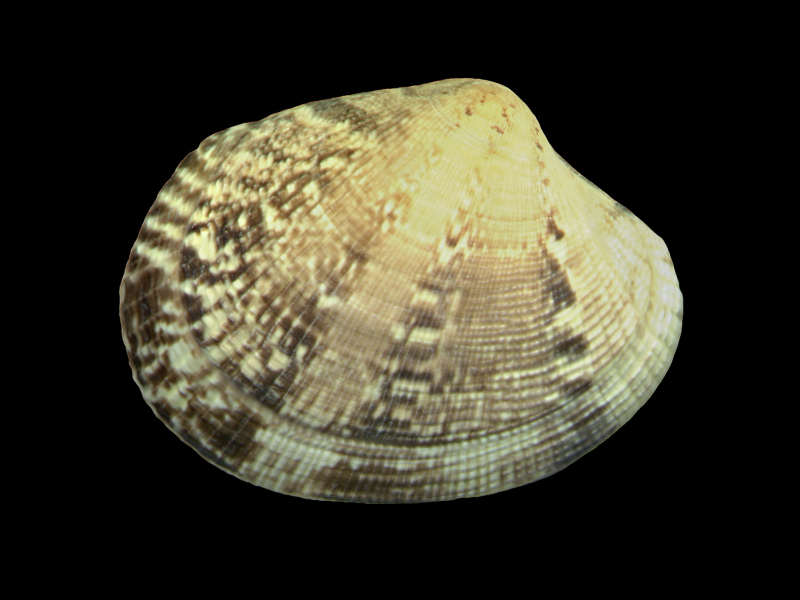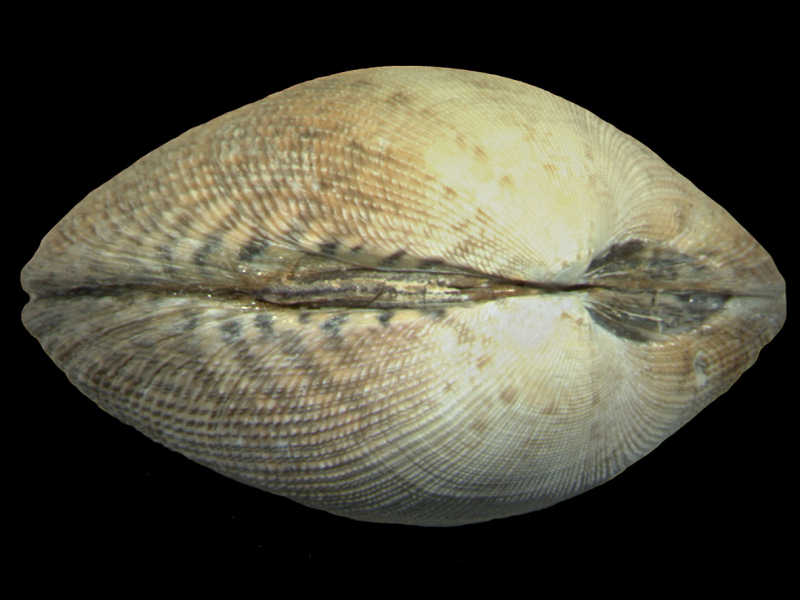Manila clam (Ruditapes philippinarum)
Distribution data supplied by the Ocean Biodiversity Information System (OBIS). To interrogate UK data visit the NBN Atlas.Map Help
| Researched by | Michelle Carter | Refereed by | Admin |
| Authority | (Adams & Reeve, 1850) | ||
| Other common names | - | Synonyms | Tapes philippinarum , Venerupis semidecussatus , Venerupis philippinarum , Venerupis semidecusata , Venerupis japonica |
Summary
Description
Recorded distribution in Britain and Ireland
This species is common around American shores but there here are no natural populations in the British Isles. However, a population has been introduced to Poole Harbour in Dorset.Global distribution
Found in USA, British Columbia to Puget Sound and around the entire western coast of Vancouver Island.Habitat
The Manila clam is found in the mid to upper portion of the intertidal and in protected mud-gravel beaches.Depth range
-Identifying features
- Heavy, strong shell with radiating ridges and roundly triangular in shape.
- The colour of the shell is variable either greyish white through yellow to buff brown.
- The shell has distinctive black and white markings.
- Can grow to 6 cm in length.
- The siphon is split at the tip.
- The body tissues of live specimens are orange in colour.
Additional information
Manila clams are indigenous to Japan and are widely used in commercial fisheries. It can tolerate water temperatures ranging from 0 to 23 °C. The Manila clam is superficially similar in shape and size to the paloured clam Ruditapes decussatus, however the flesh of live Manila clams, especially the foot is orange whilst in the paloured clam, the foot is white. The shell of the Manila clam also has distinctive black and white markings. When observed feeding underwater, the siphon of the Manila clam is joined but separate in the paloured clam.Listed by
- none -
Bibliography
Datasets
Conchological Society of Great Britain & Ireland, 2018. Mollusc (marine) data for Great Britain and Ireland - restricted access. Occurrence dataset: https://doi.org/10.15468/4bsawx accessed via GBIF.org on 2018-09-25.
Conchological Society of Great Britain & Ireland, 2023. Mollusc (marine) records for Great Britain and Ireland. Occurrence dataset: https://doi.org/10.15468/aurwcz accessed via GBIF.org on 2024-09-27.
Fenwick, 2018. Aphotomarine. Occurrence dataset http://www.aphotomarine.com/index.html Accessed via NBNAtlas.org on 2018-10-01
Kent Wildlife Trust, 2018. Kent Wildlife Trust Shoresearch Intertidal Survey 2004 onwards. Occurrence dataset: https://www.kentwildlifetrust.org.uk/ accessed via NBNAtlas.org on 2018-10-01.
National Trust, 2017. National Trust Species Records. Occurrence dataset: https://doi.org/10.15468/opc6g1 accessed via GBIF.org on 2018-10-01.
NBN (National Biodiversity Network) Atlas. Available from: https://www.nbnatlas.org.
OBIS (Ocean Biodiversity Information System), 2025. Global map of species distribution using gridded data. Available from: Ocean Biogeographic Information System. www.iobis.org. Accessed: 2025-08-08
Suffolk Biodiversity Information Service., 2017. Suffolk Biodiversity Information Service (SBIS) Dataset. Occurrence dataset: https://doi.org/10.15468/ab4vwo accessed via GBIF.org on 2018-10-02.
Citation
This review can be cited as:
Last Updated: 18/09/2003




